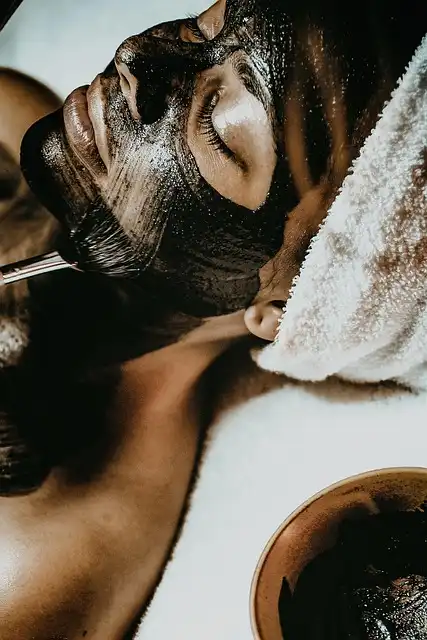Gertrude Stein: Fame, Paris, and Vichy Scandals

Gertrude Stein's fame via Alice B. Toklas' autobiography, her modernist writing, Paris salon, and the Vichy controversy are explored. Stein's legacy faces scrutiny over collaboration.
This, partly, helps to explain why, at the age of 58, Stein sat down to compose The Autobiography of Alice B. Toklas– the volume that would safeguard her lasting fame and lot of money, also as it intimidated to overshadow the extra extreme sort of composing she spent years perfecting.
Stein’s Rise to Fame: The Toklas Autobiography
Today, modernist literary icon Gertrude Stein is renowned for numerous factors. And of training course, her amazing, disorienting and challenging body of work.
Appearing in 1933, the Memoir was a determined separation from Stein’s earlier job. Obtainable and paradoxical, the book is narrated from the viewpoint of Stein’s life partner, California-born Alice B. Toklas. Trusted, it provides visitors a free-wheeling scenic tour of bohemian Paris and its stars.
her writing was in need– but the voice viewers wanted was not her own. She had lastly achieved the fame she had actually long preferred, however, for the incorrect factors: she was being appreciated not as a severe author, but as the comical heroine of Alice B. Toklas’ fictional autobiography.
As Wade notes, Stein’s uncompromising writing, abundant as it is with “wordplay, non-sequitur and extended flows of rep, confounded visitors, authors and movie critics”. Bafflement soon ended up being uncertainty.
Modernism and Critique: Stein’s Literary Style
Was Stein a wizard, changing a clean and sterile literary tradition, or an arrogant cheat? A real experimenter who freed language from its official restrictions, or a pretender that recognized nothing concerning the modern-day art she supposedly championed?
Alexander Howard does not help, seek advice from, own shares in or get funding from any firm or organization that would gain from this short article, and has revealed no appropriate affiliations beyond their scholastic consultation.
Honored as she appropriately was of her success, Stein had however had a hard time to encourage authors to take her job seriously. Yet, as literary scholar Kristin Grogan observes, Stein constantly kept her job “can be reviewed by a general target market”. Confronted with this impasse, she chose it was now or never ever.
“Function your butt off to alter the language and do not ever get famous,” experimental American poet Bernadette Mayer– who was influenced by Stein– informed her students. Stein did, undeniably, test the means we think of language– as well as about significance and literary kind.
Paris Salon: Art and Literary Innovation
Stein immersed herself in the city’s bustling modern-day art scene and held beauty salons in her house at 27 rue de Fleurus on the Left Financial institution. From there, she honed an introducing strategy to creating that came to define her creative method.
Yet there is far more to it than originally fulfills the eye: the text is a masterclass in ventriloquism, a memoir camouflaged as autobiographical reporting, in which Stein very carefully constructs her own tale while appearing to stand apart. By composing in her lover’s voice, she discovered a means to narrate– and meticulously curate– her own tale without appearing to; the outcome is at as soon as self-effacing and self-aggrandising, intimate and performative.
Born in Allegheny, Pennsylvania, in 1874, Stein examined psychology at Radcliffe University under the tutelage of William James, carrying out research right into procedures of interest and the workings of the human mind. Her real intellectual and creative trip, nonetheless, began when she transferred to Paris in 1903.
Riding the wave of the book’s runaway success, Stein returned to America for the first time in three decades. Showing up in October 1934, she invested six months touring the country, supplying talks and appearing prior to passionate crowds. Wined and dine as an authentic celeb, she took tea with Eleanor Roosevelt, paid a visit to F. Scott Fitzgerald and discussed cinema with Charlie Chaplin.
Equally as Cubist painters distorted perspective to disclose numerous perspectives simultaneously, Stein took apart traditional phrase structure and framework, intending not to describe experience, however to enact it on the printed web page.
The very first is a rich, thorough account of Stein’s life and career. The second picks up in the prompt consequences of Stein’s fatality in 1946.
If the rate is open, if the color is reckless, if the choice of a solid scent is not uncomfortable, if the button holder is held by all the waving color and there is no shade, not any shade. If there is no dust in a pin and there can be none rarely, if there is not after that the place is the same as up standing.
The action marked a decisive break with the conventions of 19th-century realistic look and the development of a single literary voice– rhythmic, tongue-in-cheek, rather much and recursive unlike anything else around. Inspired by the official advancements of Cubism and specifically by her close friendship with Pablo Picasso, who repainted a renowned picture of her, Stein aimed to equate visual abstraction into words.
The Vichy Controversy: Politics and Legacy
Though she delighted in the focus, her newly found popularity left her in something of a plight. As Wade creates, the Memoir “had actually been marketed as a tell-all confessional paying for blessed access to a coterie of celebrities”. The subtlety of Stein’s endeavor was shed on many:
She attracts specific interest to the reality Stein equated loads of nationalistic and politically reactionary speeches by Pétain, planned for magazine in America. In the preface to her translation, Stein compared Pétain with George Washington as “first in war, first in tranquility and initially in the hearts of fellow citizens.”
The Vichy routine, much from being a passive creature of the Third Reich, swiftly introduced its very own antisemitic legislation– stripping Jews of citizenship, prohibiting them from public service and helping with deportations also before Nazi stress required it.
Back in France, Stein invested the latter half of the 1930s creating a series of reflective, very experimental works, “as she duke it outed her completing needs for seclusion and for recognition”. Then, in 1939, “her relaxed regimens” were fractured, as battle loomed.
Conversations of artists with individual histories or unsavoury national politics tend to rest on how and whether art can be divorced from its manufacturer, how enjoyment of a job can or need to transform if its developer is disgraced. Stein’s job is typically thought about dispensable in these conversations: derided, caricatured, flattened, as if it’s a relief to have a concrete factor to dismiss her.
When Hitler invaded France in May 1940, impression offered method to truth. French flags were changed with Nazi swastikas.
While these translations remain unpublished, Will says– well– that they disclose Stein as a ready propagandist for the Vichy program. Her rigorously researched academic research study increases uneasy inquiries regarding values, ethical compromise and the uncomfortable web link in between modern-day art and reactionary national politics.
Wade reviews this scandal in the last chapter of Gertrude Stein: An Immortality. Not to provide clear-cut judgement, however to reflect on some stress that continue to form just how we comprehend Stein: as an author and an individual. Wade reminds us
Stein has always made people awkward. Her critics have continually concentrated on her relationships, her appearances, clichéd concepts of her style; anything yet her writing. Her unwanteds– physical and linguistic– have actually been viewed as suspicious, “ominous”, as though she should have something to hide.
Survival and Choices: Stein in Wartime France
At no point were viewers notified that the Autobiography was written with cunning self-awareness and a large dosage of paradox: that it parodies the really star society to which Stein had now dropped target, which lowers musicians to cartoonish, two-dimensional figures, and advantages the personality over the work.
It’s an inquiry that continues to haunt Stein’s heritage. Published in 2007, Malcolm’s Two Lives is just one of two significant works Wade considers carefully when resolving this dirty phase of Stein’s life. The other is literary historian Barbara Will’s Unlikely Collaboration, which centres on Stein’s decades-long relationship with Bernard Faÿ, that would certainly go on to end up being an effective driver in the Vichy program.
Needless to say, Unlikely Collaborations fired up a firestorm of conflict when it hit racks in 2011. Some accused Will of staining Stein’s name; others applauded her for challenging facets of Stein’s biography that had long been downplayed or just neglected.
Hurriedly installed as the premier of France following the Nazi intrusion, the 84-year-old former solider authorized the Franco-German Armistice on June 22, 1940. With this act, France was divided in 2: the north was inhabited by the Germans, while the south– quickly referred to as Vichy France– stayed nominally independent under Pétain’s guideline.
By squarely recognizing Stein’s very real individual shortcomings, while verifying the sustaining vigor of her writing– stunning, hard and disorienting as it undoubtedly is– Wade’s bio makes an influential instance for why Stein’s work continues to matter, “as new voices enter discussion with it, drawing out different meanings and possibilities”.
The outdoors started to push in on the cherished residential life Stein and Toklas had actually so thoroughly created. As the hazard of Nazi Germany’s invasion of France came into sharper focus, she became obsessed on prophetic indicators and astrological predictions, pulling back right into spells of wishful thinking.
Honored as she rightly was of her achievements, Stein had actually nevertheless battled to convince publishers to take her job seriously. As literary scholar Kristin Grogan observes, Stein always preserved her job “might be checked out by a basic audience”. Showing up in 1933, the Autobiography was a computed departure from Stein’s earlier work. Regardless of having the alternative to go back to the US, Stein and Toklas– currently living under the Vichy program– chose to remain in France. Published in 2007, Malcolm’s Two Lives is one of two significant works Wade considers in detail when addressing this murky chapter of Stein’s life.
He was at some point convicted for his collaborationist tasks and punished to prison, but left in September 1951. Wade details how, in a bizarre, nearly astounding spin deserving of the investigative novels Stein once feasted on, it was none other than Alice B. Toklas who stumped up the funds that assisted him go across right into Switzerland, disguised as a Catholic clergyman.
Regardless of the seriousness of the situation, Stein continued to cast about for sources of optimism. Like numerous others in France, she took relief in the figure of Philippe Pétain, who appeared to use security amid the chaos and unpredictability.
A chronicler of Franco-American connections, Faÿ, who aided organise Stein’s triumphant tour of America, played a noticeable function in the program’s anti-Masonic efforts– a sweeping suppression that involved shuttering Masonic lodges, releasing listings of members and implicating Freemasons of anti-French conspiracy theories.
Out purchasing in the commune of Belley, Stein and Toklas, that had for years rented out a residence in the neighboring district of Bilignin, viewed tanks roar right into the market square. A bridge was flopped. Curfews were enforced. Nightly blackouts ended up being commonplace.
Regardless of having the option to return to the US, Stein and Toklas– currently living under the Vichy regimen– picked to remain in France. Their decision to stay, and the question of how they took care of to make it through the battle unharmed, has long busied critics and biographers alike. Janet Malcolm, for one, famously asked: “Just how had both of elderly Jewish lesbians survived the Nazis?”
1 Alice B. Toklas2 Gertrude Stein
3 literary scandal
4 modernist writing
5 Paris salon
6 Vichy France
« Kamala Harris Slams Biden’s “Recklessness”Iran’s Deception & Global Threats: An Intelligence Perspective »
